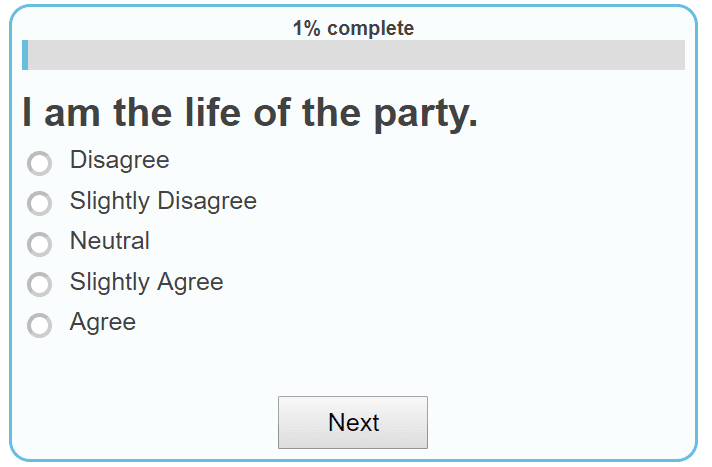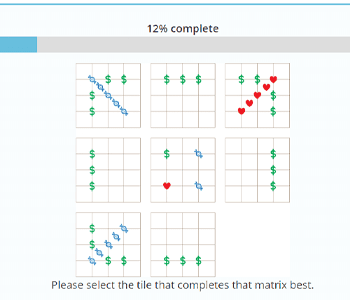How do you motivate your friend to be the designated driver on a night out? Maybe you buy them food and non-alcoholic drinks throughout the night.
How do you motivate a child to clean their room? You might offer them a sticker every time their room is clean.
How do you motivate yourself to eat healthier? You might hang a dress of your "desired" size in your closet.
These are all very different ways to motivate people to do different things, but they have one thing in common: they are all incentives.
Incentives are an effective way to motivate people to do something. We use incentives to motivate ourselves, our friends, our kids, our employees, or anyone else. This theory hasn't always been as self-evident as it is now. Many trace the Incentive Theory of Motivation back to the 1940s and 1950s, but not much further beyond that!
In this video, we will talk about the Incentive Theory of Motivation, how it plays into some of psychology’s most famous experiments, and how theories of motivation don’t always explain why we feel motivated to do things.
What Is the Incentive Theory of Motivation?
Before the Incentive Theory of Motivation, psychologists primarily focused on internal motivators. We eat food because we’re hungry. We sleep because we’re tired. Other theories focused solely on bodily functions and reaching a state of homeostasis. But that approach fails to explain a lot of choices that we make as humans. Why do we choose one career over another? How can we be convinced to do things we don’t want to do? And if motivation is focused primarily on bodily function, does motivation only come from nature rather than nurture?
Psychologists in the 1940s and 1950s said “no.” Or rather, I should say behavioral psychologists during this time said “no.” During this time, a new field of psychology took center stage: behaviorism. Rather than focusing on the internal happenings of the body and mind, psychologists looked at external sources of motivation. And they found just that - that external factors can motivate people to behave in certain ways or take certain actions.
These external factors are also known as “incentives.”
But these incentives aren’t just rewards that motivate you to perform a certain behavior. Incentives also cover punishments that discourage you from performing certain behaviors. The incentive theory of motivation suggests that rewards and punishments can motivate us in addition to intrinsic forms of motivation.
The Influence of Parenting on Motivation Through Rewards and Consequences
The seeds of motivation, whether toward social behavior, educational attainment, or personal goals, often find their roots in the formative years of childhood. Our parents, or primary caregivers, play a pivotal role in instilling the foundations of incentive-based motivation through their child-rearing practices.
Child-rearing and Behavioral Shaping
From an early age, we are exposed to a system of rewards and consequences that shape our behavior. This system is not a modern invention but a timeless aspect of parenting and teaching that aids in socialization and developing self-discipline.
- Positive Reinforcement: A child is often rewarded for desirable behaviors. These rewards can be tangible, like a toy for sharing with a sibling, or intangible, such as praise for completing homework. Over time, these positive reinforcements promote a repeat of the rewarded behavior, embedding it as a habit.
- Negative Reinforcement: Similarly, to avoid a negative outcome, such as being grounded, a child might be motivated to adhere to set curfews. Here, the avoidance of an unfavorable consequence reinforces the desired behavior.
- Punishments: On the other hand, implementing consequences for undesirable actions, such as time-outs for throwing tantrums, is meant to discourage those actions in the future.
Modeling and Observational Learning
Beyond direct rewards and punishments, children also learn through observation. They watch how their parents and others in their environment respond to various situations and the subsequent outcomes of those behaviors. This form of modeling can profoundly impact a child's understanding of the relationship between actions and incentives.
Long-Term Impacts of Early Incentivization
The early exposure to this system of rewards and consequences can have long-lasting effects. It shapes not only immediate behavior but also future motivation. As adults, these ingrained patterns can influence our career choices, personal goals, and even parenting styles. It is the delicate balance of reinforcement and consequence during childhood that can set the stage for our later understanding of and response to incentives.
In sum, the tapestry of motivation is woven with threads that span back to our childhood experiences. The lessons learned through the rewards and consequences administered by our caregivers remain with us, shaping our motivations and behaviors profoundly. Through understanding these early influences, we can better comprehend why certain incentives work for us as individuals and how our history of learned motivation can inform our current and future decision-making processes.
Rewards vs. Punishments
You can probably think of rewards and punishments that you, your parents, or even society use to motivate you to perform or abstain from certain behaviors.
- You are compensated for your time at work. That compensation is a reward.
- You may have received a speeding ticket for failing to obey the speed limit. This is a punishment.
- A child is given a toy after behaving at the dentist - a reward.
- A stranger is given a $10,000 reward for finding a neighbor’s dog.
- A student is given detention for cursing at a teacher or some other form of punishment, depending on the school’s policies.
- A parent punishes a child by taking away their iPhone after they sneak out of the house.
These incentives - money, toys, or iPhones - are external stimuli that can be removed or added to a situation to motivate behavior. Sometimes, these incentives encourage a one-time behavior. Other times, a person can be conditioned to feel motivated to behave in a certain way.
Operant and Classical Conditioning
Behaviorists not only believe that rewards and punishments can motivate behavior, but they also believe that, through conditioning, you can motivate a person to perform a behavior repeatedly. This includes the subconscious and conscious performance of behaviors.
Take Ivan Pavlov, famous for his experiments studying dogs and reinforcement. He motivated dogs to drool at the sound of a bell unconsciously! The dogs were already motivated by an incentive - food - and unconsciously drooled when it was around. By pairing the sound of the bell with the sight of the food, the dogs were unconsciously motivated to drool at the sound of the bell.
Other experiments using conscious behaviors (also known as operant conditioning) also show that we can motivate people to behave in certain ways through incentives. A child is more likely to study if they know they get ice cream every time they get an A+ grade on their report card. A person is less likely to drive under the influence of drugs if they know they will face a steep fine for doing so. People will do a lot of things for a big paycheck.
Intrinsic vs. Extrinsic Motivation
However, psychologists recognize that incentives aren’t just food, stickers, or material objects. Incentives can also come from internal sources - and this is known as extrinsic motivation. Material or external objects are, therefore, extrinsic motivation.
Intrinsic motivation deals with our feelings, sense of balance, sense of control, or how we see ourselves. If you are motivated to study for a test because you feel rewarded by the knowledge that you are at the top of your class, you are driven by intrinsic motivation. If you are motivated to study because your parents will buy you a car for being at the top of your class, you are driven by extrinsic motivation.
Maybe you make your bed in the morning because you feel better when you see it all clean and tidy at the end of the day - that’s intrinsic motivation. If your partner tends to get frustrated with you when you don’t make the bed, you’re facing extrinsic motivation.
Remember, like rewards and punishments, intrinsic and extrinsic incentives are still incentives.
Does This Theory Work?
You can probably think of a few instances when incentives motivated you or another person. You can also probably think of a few instances when those incentives failed to move someone else to complete the same task. So does the Incentive Theory of Motivation “work?” Yes and no.
While all of the “main” theories of motivation explain why we do some things, there is no one theory of motivation that can provide a formula for motivating every single person. The power of incentives is different for everyone. What one person might be motivated to do for $5 will be very different from what another person might do for that same amount of compensation. A sticker may motivate a child when they are five years old, but that same sticker is unlikely to motivate them at 15. The motivation to smoke a cigarette varies depending on how much you crave nicotine or whether you have another incentive for quitting.
How powerful are incentives? The answer depends on you. You can change the power of an incentive by looking at it differently. A fancy sports car may motivate you one day, but changing your mindset and focusing on immaterial rewards and punishments may change how you look at that sports car. So it’s hard to gauge just how powerful certain incentives can be.
What’s important to take away from this video is that through the Incentive Theory of Motivation, psychologists began to understand the power of rewards and punishments and how they play into motivation. Motivation was no longer something that only nature could influence - a person’s environment could also motivate their behavior—another example of why human behavior and psychology are very complicated.



